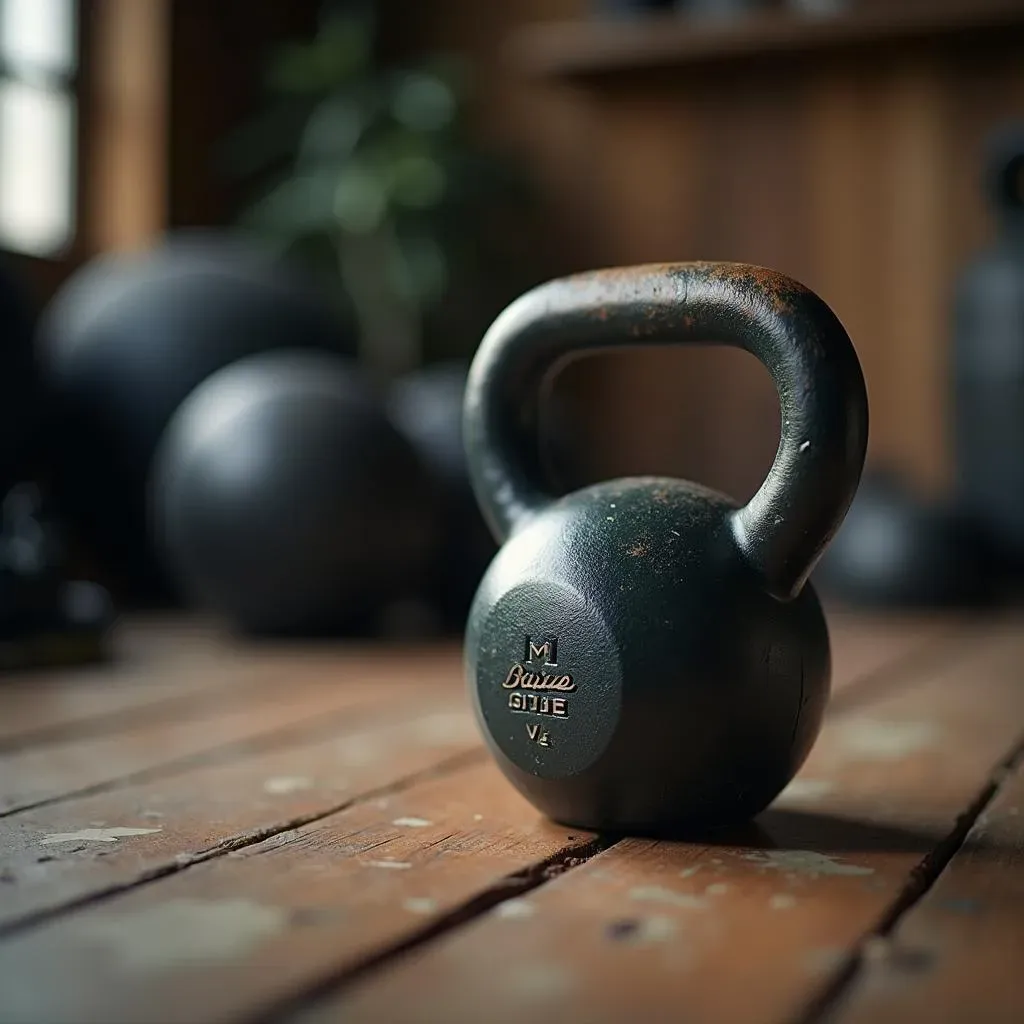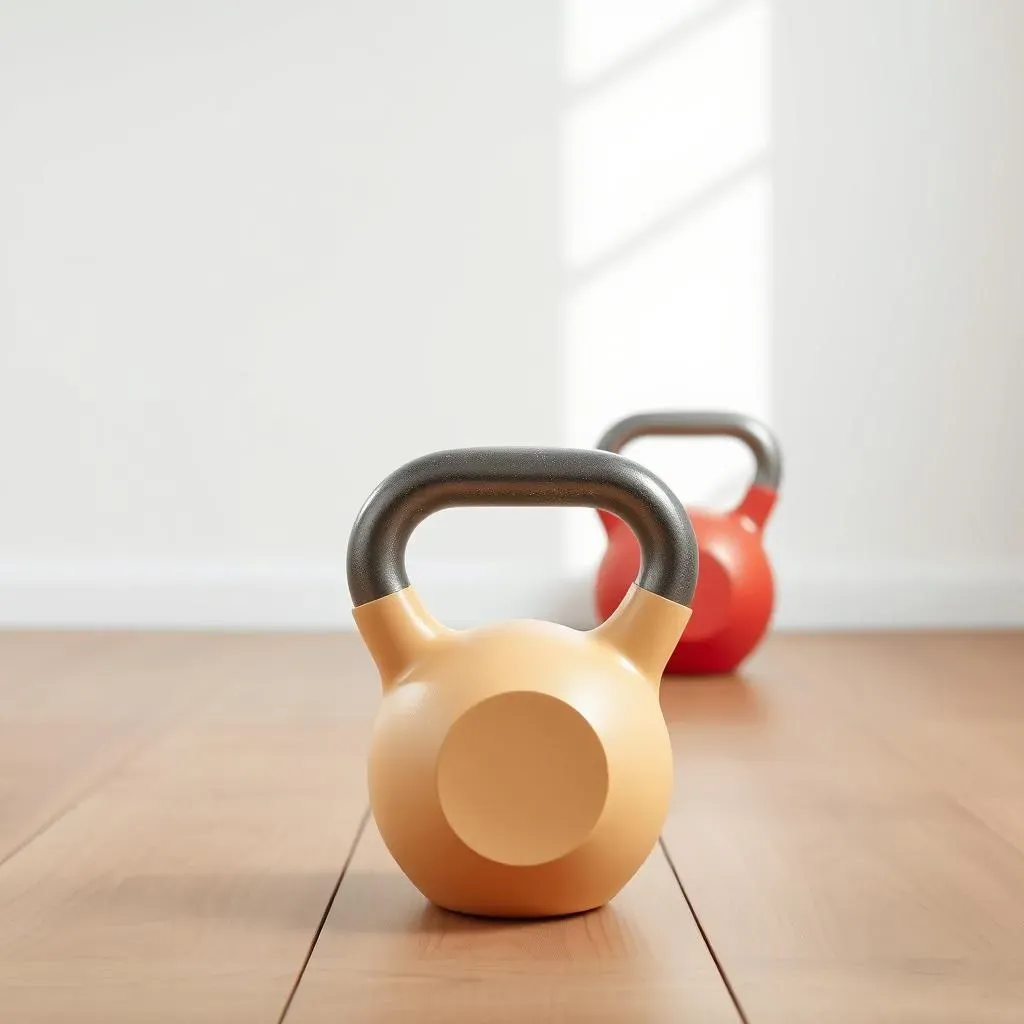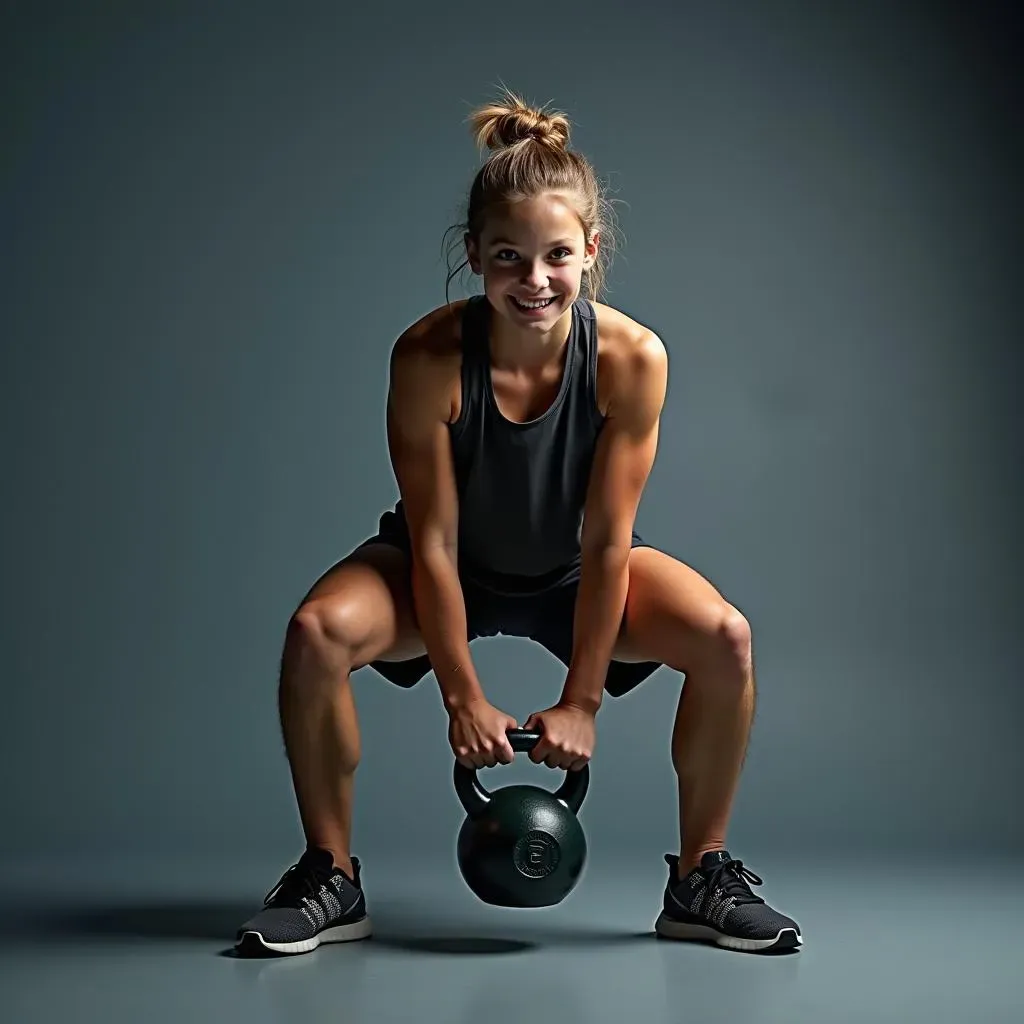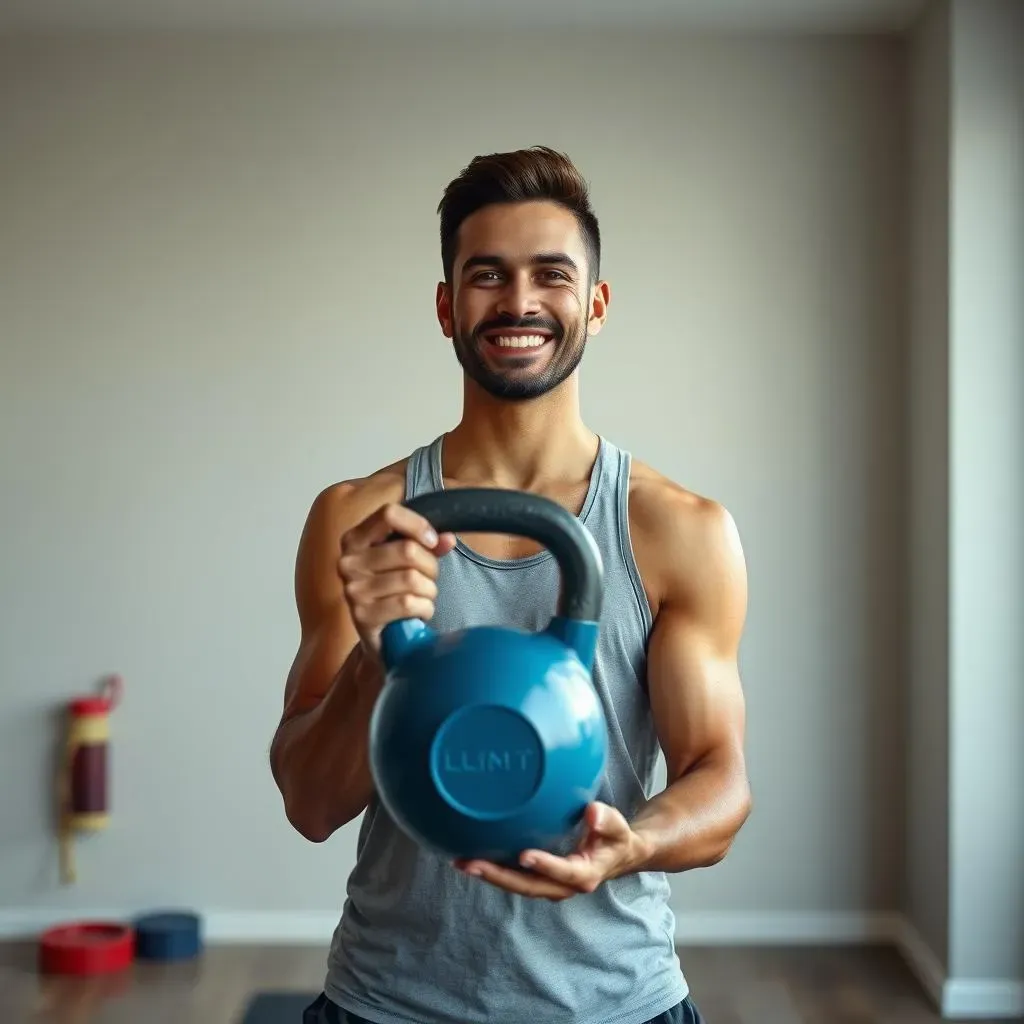Table of Contents
Ever stared at a kettlebell, wondering if you need one or a whole rack of them? You're not alone. The question of "how many kettlebells do you need for a workout" pops up for everyone, from newbies to seasoned lifters. It's like trying to decide how many spoons you need for a meal – one might do the trick, but sometimes you want a whole set! This article will cut through the confusion and get straight to the point. We'll explore whether you can get by with just one, or if two is the magic number. We'll also discuss the benefits of single vs double kettlebell training, and when to make the jump. We'll guide you on how to progress from one to two, and even if you need two of the same weight, and give you some beginner-friendly double kettlebell exercises. So, grab your (maybe just one) kettlebell, and let’s get started!
How Many Kettlebells Do You Need for a Workout?

How Many Kettlebells Do You Need for a Workout?
Okay, let's get real. You're eyeing that kettlebell, maybe even two, and wondering if you're about to waste your money. The good news? You can absolutely get a fantastic workout with just one. Yeah, that single hunk of iron can be your best friend. Many people, even those who are pretty strong, stick with a single kettlebell for most of their training. It’s versatile, it's effective, and it won’t break the bank. Think of it as a multi-tool for your body, hitting different muscles with swings, squats, and presses. But, the question isn't always about what you *can* do, but what you *want* to do.
Single vs Double Kettlebells: What's the Difference?

Single vs Double Kettlebells: What's the Difference?
One Bell: The Solo Act
Think of a single kettlebell workout as a dance with asymmetry. When you're swinging just one, your body has to work extra hard to stay balanced. This means your core is constantly firing to keep you from tipping over. You'll see a lot of rotational pull, which is fantastic for building a strong, stable spine. Single kettlebell exercises are also endurance powerhouses. You can crank out reps for days, building that "go-all-day" kind of strength. It’s like learning to ride a bike – you're focused, you're wobbly at first, but you get it done!
Double Trouble: Strength and Balance
Now, grab a second kettlebell, and things get interesting. Double kettlebell exercises are like turning up the volume. The load is doubled, so everything becomes more demanding. You'll need more control, more power, and more focus. It's like trying to juggle two bowling balls – not for the faint of heart. But it's also where you can really see the strength gains. Your body learns to move as a unit, and the balanced load challenges your stability in a whole new way. This is where you go from "strong" to "seriously strong".
Feature | Single Kettlebell | Double Kettlebell |
|---|---|---|
Load | Moderate | High |
Core Activation | High (Stabilization) | Very High (Overall Strength) |
Focus | Rotational Pull, Endurance | Strength, Balance |
Best For | Beginners, Endurance Work | Advanced, Strength Training |
The Best of Both Worlds
The truth is, neither single nor double kettlebell training is "better." They're just different. One is like a precision instrument, fine-tuning your body's ability to stabilize and endure. The other is like a sledgehammer, building raw strength and power. So, which one is right for you? Well, that depends on your goals. But, you don't have to choose one over the other. You can use both to create a balanced and effective workout routine. It's about understanding how each tool works, and how to use them to your advantage.
Progressing from One to Two Kettlebells

Progressing from One to Two Kettlebells
Mastering the Basics First
Before you start juggling two kettlebells like a circus performer, you've gotta nail the fundamentals with one. I'm talking about swings, squats, cleans, and presses. These aren't just exercises; they're your foundation. If you can't do them correctly with one kettlebell, adding another is just asking for trouble. Think of it like learning to walk before you run. You wouldn't try to sprint before you could even stand, would you? It’s the same with kettlebells. Focus on good form, control, and getting comfortable with the weight. Don't rush to add another bell just because you think you should, patience will pay off.
Gradual Increase in Weight and Difficulty
Once you're comfortable with the basics, it's time to think about adding that second kettlebell. But, don't go grabbing two 32kg bells right away. Start slow. Maybe, use the same weight you're already comfortable with, or go a little lighter. The idea is to let your body adapt to the new challenge. This is not a race, it's a marathon. You can start by doing exercises that are less technical, like goblet squats and lunges. Then move on to more complex exercises. Small steps make big changes over time. This approach is all about building a solid base before going all in.
Step | Action | Focus |
|---|---|---|
1 | Master single kettlebell basics | Form, control, comfort |
2 | Add second kettlebell with same or lighter weight | Adaptation, stability |
3 | Start with leg-based exercises | Safety, strength |
Starting with Leg-Based Exercises
Alright, you've got two kettlebells in hand, now what? Start with exercises that are less risky, like double kettlebell squats or lunges. These are fantastic for building strength and stability without putting too much stress on your shoulders. You'll notice that two kettlebells will challenge your body in a whole new way. Don't be surprised if you feel a little wobbly at first, your body is working harder to control the weight. It's like learning to ride a bike with two wheels instead of one. You might wobble a bit, but you’ll get the hang of it. The key here is to go slow, focus on your form, and don't get discouraged if it feels a little awkward at first. You got this!
Do You Need Two Kettlebells of the Same Weight?

Do You Need Two Kettlebells of the Same Weight?
Alright, let's talk about matching kettlebells. Do they need to be twins? Not necessarily. While having two of the same weight is great for balanced strength work, it's not a strict requirement. Sometimes, using different weights can actually add a fun twist to your workout. Think of it like this: if you're doing a double kettlebell press with one heavy and one lighter bell, your body has to work extra hard to stabilize. It's like trying to walk on an uneven surface – it challenges your balance and control in a whole new way. This can be a great way to introduce some instability and make your workout more engaging. The key takeaway is that having two kettlebells of the same weight is a good starting point, but don’t be afraid to experiment with different weights to add a new challenge.
I've seen people make incredible progress by using mismatched kettlebells. It forces the body to adapt and become more resilient. It's like learning to play a musical instrument – you don’t just play the same note over and over, do you? You experiment, you play around, and you find new ways to express yourself. The same goes for your body. Using different weights can be a great way to add variety to your routine and keep things interesting. It's about listening to your body, understanding its needs, and finding what works best for you. So, don't stress about having two identical kettlebells, embrace the difference and see how it challenges you.
Scenario | Weight of Kettlebells | Benefit |
|---|---|---|
Balanced Strength | Same Weight | Even Load, Symmetry |
Instability Challenge | Different Weights | Increased Core Activation, Improved Balance |
Variety | Different Weights | Engaging, Prevents Plateau |
Double Kettlebell Exercises for Beginners

Double Kettlebell Exercises for Beginners
Double Kettlebell Goblet Squats
Okay, let's kick things off with something familiar, the goblet squat, but with a double kettlebell twist. Instead of holding one kettlebell at your chest, you're going to hold one in each hand, right at your chest. It's like giving your regular squat a super-charged upgrade. This exercise is great because it's not super technical, but it really gets your legs and core working together. It's like a warm hug for your muscles, getting them ready for more.
When you're doing these, remember to keep your chest up and your back straight. Think about sitting down between your knees, and keep those elbows tucked in to your body. The key is to control the movement, don’t let those kettlebells swing around. It's about feeling the burn in your legs and core. The double kettlebell goblet squat is your gateway to more challenging double kettlebell moves, so get comfortable with this one. It's like putting on your training wheels before you hit the open road!
Double Kettlebell Lunges
Next up, we've got double kettlebell lunges. Now, these might seem simple, but they’re a real game-changer. Holding a kettlebell in each hand as you lunge adds a whole new level of challenge. It’s like walking on a balance beam while carrying groceries – you’ve got to stay focused and controlled. This exercise isn't just about leg strength; it's also about balance and stability. Your core works overtime to keep you upright, and your legs are feeling the burn. It’s a full-body workout disguised as a simple lunge.
Remember to step forward with control, and drop that back knee straight down towards the floor. Keep your chest up, and your eyes looking forward. Don't let those kettlebells pull you off balance. It's about making sure each rep is as good as the last. Double kettlebell lunges are fantastic because they’re like a moving squat, hitting all the same muscle groups while adding a new dimension to your training. It's like upgrading from a bicycle to a motorcycle – same concept, but a whole different experience!
Exercise | Muscles Worked | Focus | Tips |
|---|---|---|---|
Double Kettlebell Goblet Squat | Legs, Core | Form, Control | Keep chest up, elbows tucked |
Double Kettlebell Lunge | Legs, Core, Balance | Stability, Control | Step with control, keep back knee down |
Conclusion

Conclusion
One Kettlebell is a Great Start
So, "how many kettlebells do you need for a workout?" The answer isn't as simple as one or two, it really depends on where you're at in your fitness journey. But if you're just starting out, or even if you're not a beginner but want to keep things simple, a single kettlebell can be your best friend. It’s like having a Swiss Army knife for fitness – versatile, effective, and gets the job done. You can build strength, endurance, and stability, all with just that one piece of equipment. Don’t feel pressured to buy a whole set, sometimes less is more.
But, if you’re looking to step up your training, adding a second kettlebell is like switching from a bicycle to a motorcycle. It adds a whole new layer of challenge. You’ll need more control, more power, and more focus, and you’ll see your strength gains go through the roof. It’s a great way to push your body to new limits. But, the transition from one to two shouldn't be rushed. It's about building a solid foundation first, and then gradually adding more weight and difficulty. It's like learning to walk before you run, or in this case, swing two kettlebells like a pro.
Listen to Your Body and Progress Smartly
The most important thing to remember is that your fitness journey is just that, yours. There’s no one-size-fits-all answer when it comes to kettlebells. Whether you stick with one, or move on to two, it’s about what works best for you and your goals. Don't feel pressured to do what others are doing. Some people thrive with single kettlebell workouts, while others love the challenge of double kettlebells. The key is to listen to your body, progress at your own pace, and have fun with it. It’s like cooking, you have to experiment with different ingredients to find your perfect recipe.
So, go ahead, grab your kettlebell (or two), and start swinging! Whether you're using one or two, the important thing is that you're moving your body and challenging yourself. And who knows, maybe one day you'll be juggling three kettlebells like a circus performer, but let's just take it one step at a time. Remember, fitness is a marathon, not a sprint, and every step you take is a step towards a healthier, stronger you. So, keep swinging, keep pushing, and keep having fun.
Consideration | Recommendation |
|---|---|
Starting Point | One kettlebell is great for beginners |
Progression | Move to two kettlebells when comfortable |
Weight | Start with manageable weight and increase gradually |
Listen to your body | Adjust as needed |
FAQ

FAQ
Is kettlebell training good for getting ripped?
Alright, let's talk about getting "ripped." Can kettlebells get you there? Absolutely. Kettlebell training is fantastic for adding muscle and reducing fat. It's like a two-for-one deal. The dynamic movements, like swings and snatches, burn a ton of calories, helping you shed that extra layer. At the same time, the resistance builds lean muscle, giving you that toned, athletic look. It’s like sculpting your body with iron. But, if your goal is to gain a lot of size, kettlebells might not be the best choice. They're more about that lean, functional strength, rather than pure bulk. So, if your goal is to look like a Greek statue, kettlebells can definitely help, but they might not be the only tool you need. It’s like using a paintbrush to create a masterpiece, it’s a great tool, but you might need some other tools to complete the job.
I've seen a lot of people transform their bodies with kettlebells. They’ve dropped the extra weight, and built lean, powerful muscles. It's not just about looking good, it’s about feeling good too. Kettlebells are a great way to get that functional strength that makes everyday activities easier. It’s like upgrading your car’s engine, you’ll have more power and a smoother ride. But remember, it's not just about the kettlebells, it's about consistency, proper nutrition, and a well-rounded training program. So, if you’re looking to get ripped, kettlebells can be a powerful ally, but they are just a part of the overall puzzle. It’s like baking a cake, you need all the right ingredients to get the best results.
Goal | Kettlebell Benefit |
|---|---|
Get Ripped | Fat Loss, Lean Muscle |
Gain Bulk | Not primary tool, more for lean strength |
Overall Fitness | Functional strength, endurance |
What weight kettlebell should I start with?
Ah, the million-dollar question! Choosing the right kettlebell weight is a personal thing, and it really depends on your experience, fitness level, and goals. But, here’s the general rule of thumb: if you're a beginner, start light. For most women, an 8-12 kg (18-26 lbs) kettlebell is a good starting point. For most men, a 16-20 kg (35-44 lbs) kettlebell is a good starting point. It's like learning to drive, you wouldn't start with a race car, would you? You need to get comfortable with the basics first. It’s always better to start lighter and focus on your form rather than go heavy and risk injury. Remember, it’s not a competition, it’s about getting stronger and healthier.
As you get stronger and more comfortable with the exercises, you can gradually increase the weight. It's like leveling up in a video game, you’re not going to stay at level one forever. It’s important to listen to your body and not push yourself too hard, too soon. If you’re struggling to maintain good form, it's a sign that you need to lighten the load. The key is to find a weight that challenges you without compromising your technique. It’s like finding the perfect pair of shoes, they should fit well and support you every step of the way. So, start light, focus on form, and gradually increase the weight as you progress. It's a journey, not a destination, so enjoy the ride!
"The journey of a thousand miles begins with a single step." - Lao Tzu